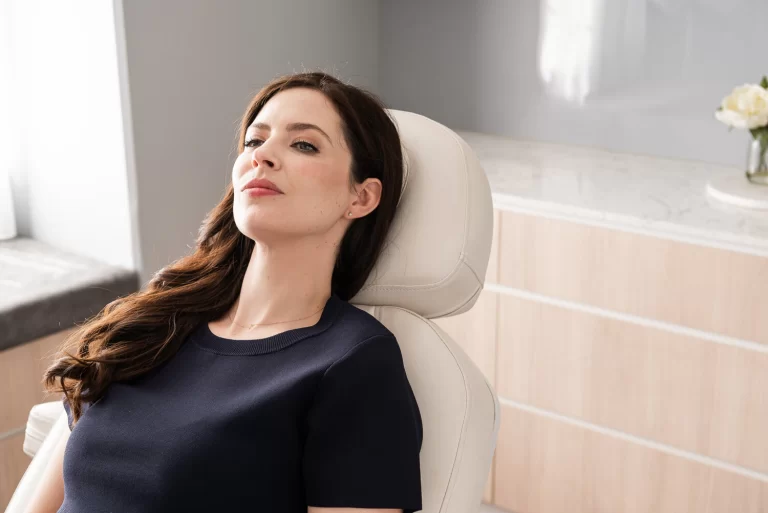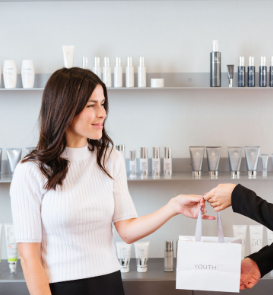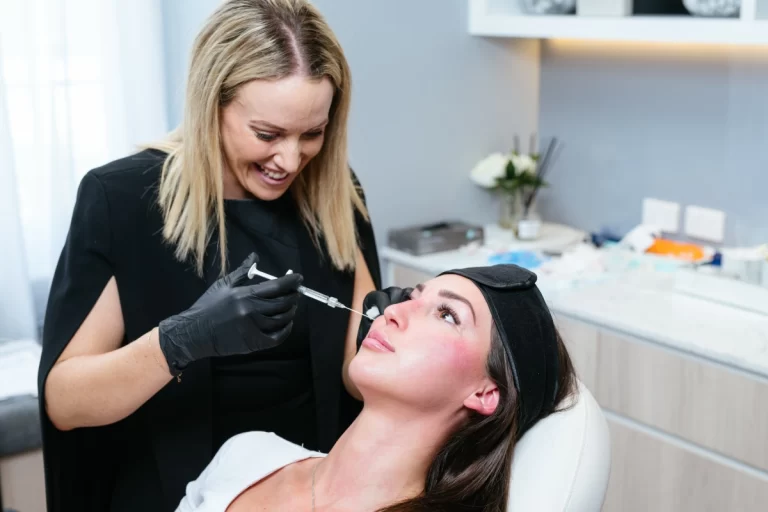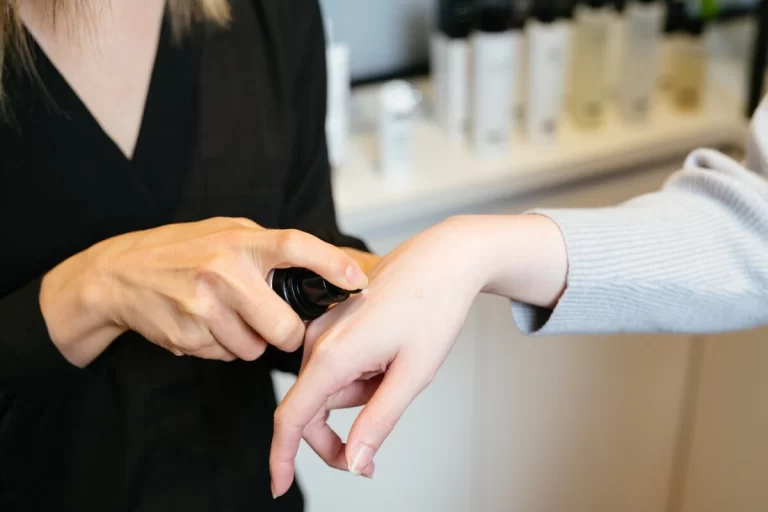10 Skin Care DIYs NOT to Try at Home

We are all facing a very interesting time in our lives. Unable to attend the clinic for our maintenance skin and beauty treatments; paired with elevated anxiety and stress levels due to social distancing and home confinement. It is no wonder many of us are seeking alternatives to our regular treatments and noticing changes to our skin.
I have seen so many DIY home skin care routines and treatments surfacing in recent weeks. However, it is vitally important to remember that the skin is our largest and most delicate organ and although it can be tempting to treat it at home with cheap and easy DIY skin fixes, many of them can do more harm than good.
Today we explore those DIY skin tricks NOT to try at home…
If you are looking for safe and effective alternative home treatments and product recommendations then the Youth Lab team is here to help. Simply book online for a complimentary virtual consultation or email hello@youthlab.com.au.
Dr Kate
1) Lemon juice to brighten and lighten the skin
I remember hearing this ‘skin care tip’ in high school, using lemon juice on your skin to lighten dark spots, brighten the complexion and give your skin a luminous glow. False. Using lemon juice as a skin lightening or brightening agent can be quite dangerous.
The skin has a very delicate balance and natural pH range of 4-5 (you will see me refer to the pH of the skin quite a lot in this article). Anything that disturbs this delicate balance can impair the barrier function of the skin which in turn can lead to increased sensitivity (think redness, flakiness, breakouts and burning). The pH of lemons is in the highly acidic range of 2. Lemons are an acid. This low pH can then cause serious issues with the skin’s natural acid mantle, bringing the skin pH lower and damaging the protective barrier of the skin. Not only is the skin’s barrier function then disturbed but lemons can actually cause a physical burn as well.
Developing a chemical burn from lemon juice can in turn case issues with scarring and post inflammatory hyperpigmentation (darkening of the skin due to trauma). Lemons also contain a chemical called psoralen which increases sun sensitivity. Going out into the sun, or even driving, with lemon juice on your skin will increase the risk of sun burns and photodamage due to UVA and UVB, which in fact further exacerbates hyperpigmentation.
If lightening the skin, brightening the complexion or treating dark spots is what you are after in a skin care ingredient then look for alternatives. Vitamin C is a powerhouse as lightening pigmentation and protecting against free radical damage from the environment and UV rays. My favourite vitamin C product is PCA Skin C and E Strength Max. Ensure you incorporate a vitamin A, niacinamide (vitamin B3) and in cases of hormonal pigment or post inflammatory hyperpigmentation a tyrosinase inhibitor (inhibits the production of melanin) such as prescription hydroquinone or it’s derivatives.
2) Egg whites to lift and tighten the skin
This one should really be obvious, but you see it all over the internet that people are using egg whites to tighten and lift the skin, temporarily reducing fine lines and wrinkles. Think of egg whites when you fry an egg, how it hardens when heat is applied, this is the same theory when applied to the skin. If you apply egg whites to the face, they will harden like a mask leaving the skin tighter once removed.
I shouldn’t need to say that this DIY home skin care trick is a recipe for trouble. For a few reasons. Number one eggs are thick and can act occlusive on the skin, they can clog the pores and increase congestion. Number two, there is absolutely no benefit to the skin and no physiological way in which an egg white could tighten the skin. Number three, egg whites, if raw, can increase the risk of Salmonella poisoning. This bacteria can enter the bloodstream through the skin causing symptoms of food poisoning.
My advice is to leave the eggs for brunch. If you are looking for an at home skin tightening mask my go to is a specialised cosmeceutical mask from Cosmedix called Bioshape. This is a wonder mask which can increase hydration and lift the skin with regular application. It contains a sugar based ingredient that adheres to the surface of the skin creating an elastic, flexible “lifting film.” It also contains powerful peptides and botanical extracts which fight against skin sagging and improves resistance to gravity.
3) Applying toothpaste on pimples
Ahhhh another old one. I have memories of applying toothpaste to my pimples and leaving it on overnight. Yes it can dry out the pimple, but realistically it is not the saviour treatment that will help your acne in the long run.
It became a bit of a cult at home treatment due to some toothpastes containing hydrogen peroxide which is an antiseptic and has antibacterial properties. So while this ingredient may temporarily decrease the inflammation is can also be an irritant itself and lead to skin irritation, sensitivity and even pigmentation changes and scarring.
Toothpaste can be full of other skin irritating ingredients such as baking soda (more on that later), SLE and artificial flavourings such as mint. These irritating ingredients can in fact cause more breakouts and block the pores. They can also lead to redness, sensitivity and peeling skin. Hardly the most effective spot treatment for your pimples.
Leave the toothpaste for cleaning your teeth. Invest in a high quality cosmeceutical spot treatment if you need to target individual pimples or breakouts. One of our favourite spot treatments in the clinic is the Ultraceuticals Ultra Clear Spot Treatment which may help to clear up blemishes from 2 hours of application and soothes the skin (it is also Benzoyl Peroxide free yay). It contains one of my favourite acne fighting ingredients, salicylic acid, which helps to exfoliate, break down dead skin cells, unclog the pores, and also has antibacterial properties. Other more natural spot treatments include tea tree, kaolin clay and charcoal – but again avoid DIY versions of these. Some of our favourites are from the Cosmedix range of masks such as Cosmedix Clear Mask.
4) Using cayenne pepper or cinnamon to plump lips
Ouch. No really. These spices are seriously irritating to the skin and can really burn when applied to the delicate skin and mucous membranes of the lips. All of these home lip plumpers, and many cosmetic products, use irritating ingredients which plump the lips by causing inflammation. They work on the premise that when applied they will cause blood vessels to dilate, making the lips pinker, as well as bringing more blood to the surface causing them to appear plumper. In reality what they are doing is causing an inflammatory response and what does inflammation cause? Swelling, redness, and pain. It is the body’s response to a threat.
Those who have tried this at home (I haven’t) report that their lips tingle and burn a little bit and many feel itchy, like ants crawling on the lips. The lips may also appear red, which in some cases can be early signs of contact dermatitis (especially cinnamon oil which is found in many commercial lip plumpers), which can also occur after applying spices to the lips. Worst case scenario, you are left with a rash, intense swelling to the lips, redness and burning pain that lasts even after the removal of the product. Sounds horrible to me.
Oh and any residual swelling is temporary and your lips will not remain plumped. My advice, use the spices in cooking and move on. If you are looking to enhance your lips, focus on maintaining hydration and look after the skin of your lips. My favourite product for this is Cosmedix Enhance Lip Plumping Mask. This product can be used daily as a lip balm and doubles as an intensely hydrating overnight mask. It contains only natural emollients and high performance oils which are designed to gently deliver hydration which in turn helps to define lips.
5) Pore strips to remove blackheads
This one may cause some debate but I have been turned off these products ever since I discovered one of the big brands used adhesives which were essentially the ingredients found within hairspray. There is no way I am putting such chemicals on my skin (my younger self who used hairspray to set her makeup apologises and I bet many of you did the same).
These pore strips essentially stick to the skin and need to be torn off, with blackheads and comedones supposedly being removed with them. I have a few issues, mainly the results and the ingredients.
Firstly the ingredients contained within pore strips contain nothing beneficial for skin health, neither short nor long term. I strongly believe inn feeding our skin with high quality and safe ingredients to maintain and deliver actual results! Pore strips contain alcohol and other astringents (like hairspray yikes) and can irritate and sensitise the skin. They need these adhesives to physically hold on to the black heads to pull them out, along with healthy surrounding skin. It is a no from me.
The results of pore strips are also only a “bandaid” solution. Yes the glue in the strips will clear out the pores, but it is temporary. Normal sebum production will quickly recover and they will appear blocked again. The issues with open or enlarged pores are multifactorial and include overactive sebum production and poor quality sebum to name a few. This is not addressed with pore strips.
If you really want to eliminate black heads and reduce the appearance of pores then you need to focus on long term decongestion and exfoliation to help loosen the skins keratin bonds and loosen the debris. Treatments such as the Hydrafacial, chemical peels (with AHAs and BHAs) as well as home care products containing AHAs and enzymes will do this gently, safely and deliver longer term outcomes. If you want a product that is designed to smooth the pores then my recommendation would be the Ultraceuticials Ultra Smoothing Pore refiner which has exfoliators mandelic and salicylic acid as well as the skin calming agent Niacinamide.
6) Coconut oil as a moisturiser
This is hugely popular and again, one I have succumbed to in the past. Coconut oil is extremely popular as it is seen as a natural alternative to moisturisers and has a high concentration of fatty acids which are beneficial to the skin. Claims of antibacterial properties also make it appealing as an acne treatment.
Unfortunately despite claims and wishful thinking, coconut oil is exceptionally thick and works as an occlusive to the skin. It does not deliver any hydration into the dermis and does not prevent trans epidermal water loss, rendering it ineffective as a moisturiser. Claims to be beneficial for acne are also false. Coconut oil actually penetrates and clogs the pores, causing breakouts and making existing acne worse. It is classified as a comedogenic product which is certainly to be avoided in acne prone skin.
Interestingly certain claims that coconut oil can fight against the P.acnes bacteria that is implicated in acne are incorrect. Studies which have demonstrated these antibacterial qualities used a purified form of lauric acid (the acid which is found in coconut oil). However, the concentration of this acid within coconut oil is not high enough to cause any antibacterial effect. Any slight antibacterial benefit is negated by the other comedogenic properties (thick texture and pore clogging).
I personally have used coconut oil to remove my makeup in the past and experienced greasier skin and increased breakouts. However, I do love the ingredient and actively seek out products that contain coconut. It is used as a natural foaming agent in cleansers (no nasties) and my favourite is the Ultraceuticals Ultra MD ultimate brightening foaming cleanser. It gives a rich and silky lather and also contains vitamin B3 and provitamin B5 to soothe and calm the skin as well as brightening ingredients. No increased breakouts and effective cleaning and moisturisation. The perfect product.
7) Essential oils as serums
Essential oils have increased in popularity over recent years and their uses are widespread – from cleaning, to health, to skin care and beauty. However essential oils are the perfect example of botanical based products that can cause more harm than good when applied to the skin. Natural does not always mean healthy.
Highly concentrated pure essential oils can wreak havoc on the skin, causing burns, phototoxicity, photosensitivity, rashes and allergic reactions. Even when in diluted form some essential oils can be extremely irritating.
Despite being natural, organic and cheap essential many oils offer absolutely no therapeutic benefit. They are a pure oil and hence have no appropriate delivery system to effectively penetrate the protective barrier of the skin to work deep within the dermis to produce a clinical benefit. The main issue with many of the claims made – such as anti-ageing – is that the issues and side effects often outweigh any benefit.
The main issue I have seen in my own clinical practice is contact dermatitis. Unfortunately this is also seen when essential oils (in a very low concentration) are used in cosmetics and therapeutics (even the ones we recommend). Someone may react to a cream, moisturiser or sunscreen with only a tiny amount of an essential oil, while others will tolerate it fine. It can be a nightmare to figure out what is causing the reaction.
A lack of regulation in the industry also means that one brand of essential oil will not be of the same potency as another, again increasing the risks.
My advice is to avoid essential oils if you have sensitive skin (especially rosacea) or at least dilute the oils and test patch on your skin. One essential oil that I find very effective is tea tree oil as an antibacterial and anti acne treatment, but again less is more and the side effects of this often means it is not tolerated.
8) Sugar scrubs to exfoliate the skin
I see advertisements and articles on how to make your own DIY sugar exfoliating scrub at home all the time. It sounds very tempting, cheap and easy but there are some downsides to this popular trend.
Using sugar as an exfoliator sounds great and it certainly works to help the skin feel smooth and remove surface build up. However, sugar crystals are hard, rough and textured and work to scratch the skin, leaving tiny microscopic cuts and tears. Yes they remove excess skin but in doing so they also disturb the skins healthy protective barrier.
Over time and with ongoing use the skin will be stripped back instead of gently exfoliated. Micro cuts expose the skin to infection and make it vulnerable to irritation. The protective barrier function is also impaired meaning the natural oil balance is disturbed and the skin can become dry.
There are plenty of alternatives to harsh sugar scrubs. A favourite of mine is the gentle Purity Detox Scrub from Cosmedix. This is a full body scrub which contains gentle physical exfoliators such as poppy, jojoba and date seeds for a soft and natural exfoliation of dead skin cells and debris. It also contains the powerful chemical exfoliant Salicylic acid which dissolves the debris in pores giving an intense clarifying treatment. This product is very gentle and works to both cleanse and polish the skin leaving a smoother texture and allowing for your active serums to be absorbed following.
Try it on your knees, elbows and heels and mix with water for a more aggressive scrub.
With any exfoliant, be it chemical or physical, it is important not to over exfoliate as well. The frequency of exfoliation does depend on skin type and concern and I certainly recommend NOT exfoliating every day.
9) Charcoal masks to treat acne and congestion
Charcoal is a wonder ingredient in skin care to absorb excess oil, dirt and impurities and can often be found as an ingredient in acne spot treatments and masks. However as a homemade mask it may not be the wonder ingredient you hope.
Home made charcoal masks are used for oily skin, blackheads and acne with the goal of soaking up oil and drying out pimples. However lots of the peel off masks and DIY recipes contain a few nasties. Like I mentioned with blackhead pore strips many of these charcoal sheet masks contain adhesives which tick to the skin, they strip back the protective barrier and remove healthy oils from the skin. I am sure you have seen those You Tube videos of people screaming in pain trying to remove a charcoal mask. Some DIY formulations use unknown concentrations of charcoal also which if accidentally ingested can cause side effects.
When used in properly formulated skin care however the ingredient of charcoal is excellent. Charcoal absorbs oil and helps to exfoliate and smooth the skin’s texture – removing oil, daily impurities, and pollutants. When charcoal is combined with acne fighting ingredients such as Kaolin clay the results are impressive. Cosmedix Detox mask is unlike other charcoal masks which leave the skin dry, tight and sometimes irritated. It uses a mix of charcoal and kaolin clay to gently draw out impurities leaving the skin silky smooth. I love to use it as a spot treatment when I have a break out or as a full face leave on mask when my skin needs a good clean and detox.
10) Baking soda as an exfoliator
There are plenty of online articles hailing household products such baking soda as an inexpensive, alternative exfoliator. This is a big no no. Out of all the products mentioned in this article, baking soda is one of the most damaging to the skin. Claims of being able to treat scarring, exfoliate, relieve sun burn, soothe rashes and decrease irritation are false.
Balking soda has an alkaline pH which is much higher than the acidic pH the skin maintains. As mentioned previously this acid mantle is the protective barrier to the skin and deeper tissues. If the acid balance is disturbed the skin is more prone to irritation, dryness and infection. Baking soda is extremely drying and alters the enzymes in the top layer of skin and creates the perfect environment for bacteria.
Not only does baking soda cause immediate damage to the skin, long term or cumulative use creates even more damage. Protect the skins delicate acid mantle and keep baking soda for baking, or cleaning the toilet (not your skin).
If you are after a product that exfoliates but also soothes the skin stick with alpha hydroxyl acids which are hydrating such as lactic acid and invest in products containing Vitamin E and Vitamin B3 (niacinamide) which work to restore and repair the barrier of the skin, as well as maintain precious hydration. A favourite of mine is Cosmedix Defy which contains AHAs as a gentle daily exfoliant. It exfoliates the skin, allowing it to receive and retail moisture and is great for those who may be sensitive to retinol.
I hope you enjoyed reading this blog about what NOT to try at home. If you are looking for safe and effective alternative home treatments and product recommendations then the Youth Lab team is here to help. Simply book online for a complimentary virtual consultation or email hello@youthlab.com.au.
All of the products recommended in this blog post are available to purchase via our Online Store.
Dr Kate x



